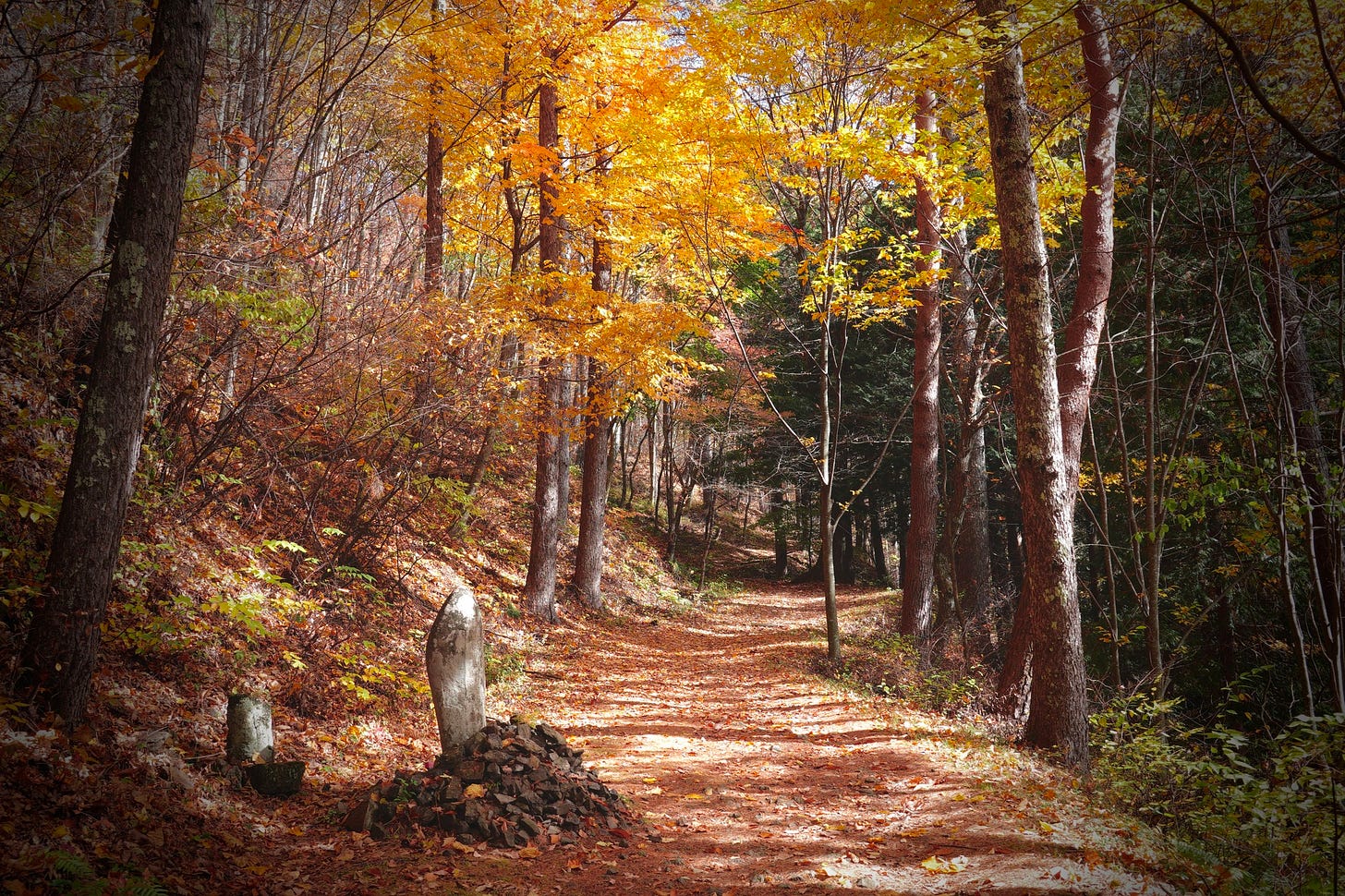The richness and density of the Autumn colours in the mountains of central Japan are breathtaking. Every new curve in the path reveals a new tableau, whether it be natural or human made or more usually a rewarding conversation between the two. Here we have two ancient stones making a simple shrine to catch, through the centuries, the enquiring eye of the passing pilgrim. On my recent tour in Japan, we finished our walks each day as if burnished ourselves by the passage of the season. This reminded me of David Ignatow's beautiful lines.
‘I wish I knew the beauty of leaves falling: to whom are we beautiful as we go?’
Below are three poems written in Japanese ‘Tanka’ style, two from the first long walk along the Nakasendo my wife and I took together on what was one of our many ‘honeymoons’ and one from our most recent journey just completed last week, taking a group of twenty willing souls through both the height of the central mountains and the Autumn colours.
The last poem is a version of a Kobayashi Issa (1763-1828) Haiku poem I found inscribed on a board in the very vantage point where he wrote it, looking down over the village of Sakamoto on a spring day over two hundred years ago. It was translated hazily to me by our Japanese guide who nevertheless communicated the economy of the language, capturing a lifted arm against the brightness of the sun, a sleeve like a theatrical curtain, the backdrop of Sakamoto and a single swallow flying beneath. I had my notebook out in a moment and got down my version while the moment was as fresh and exhilarating for me as it had been for Issa.
Keep reading with a 7-day free trial
Subscribe to David Whyte to keep reading this post and get 7 days of free access to the full post archives.





